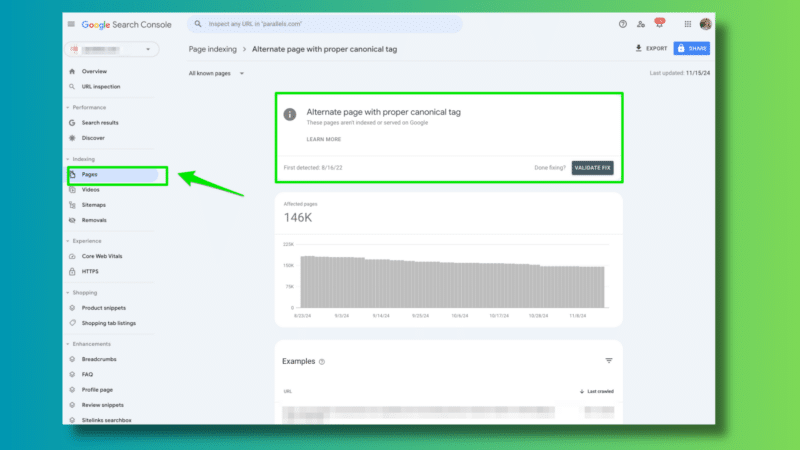
Navigating the “Alternate page with proper canonical tag” error in Google Search Console often feels like a game of high-stakes covert ops for SEO professionals.
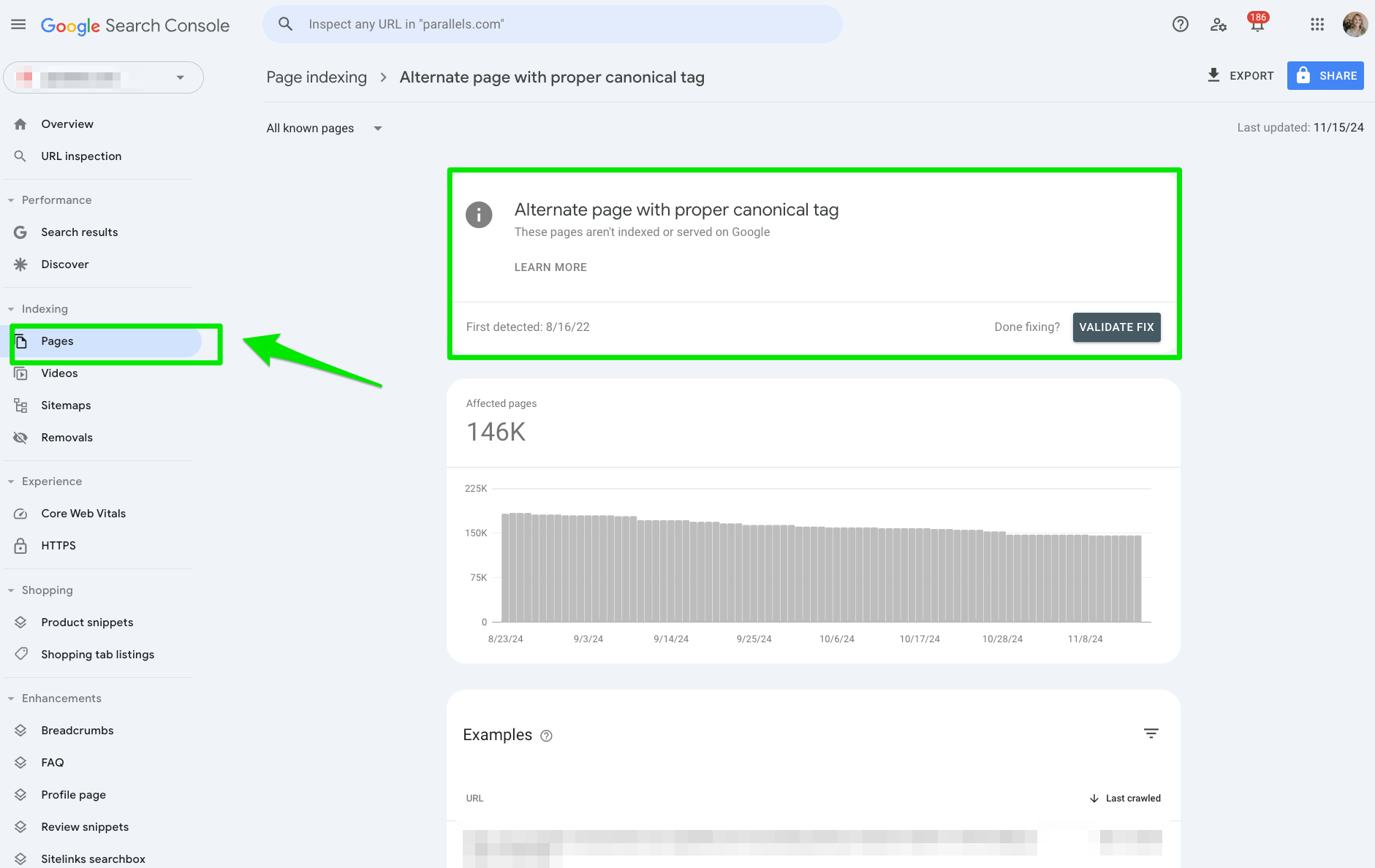
Luckily, you’re likely just dealing with duplicate content or parameter URL challenges, not life-or-death situations.
Before you start predicting the solution for this error, let’s dive into some insider (declassified) information on how Google interprets these Google Search Console errors. Google has seen some things.
How do I fix an ‘Alternate page with proper canonical tag’ error in Google Search Console?
1. Export the sample pages flagged in the Google Search Console report
First, in the “Alternate page with proper canonical tag” report in Google Search Console, export your sample pages from Google Search Console into a spreadsheet.
To access the report, go to Google Search Console > Pages > and look under the section Why pages aren’t indexed.
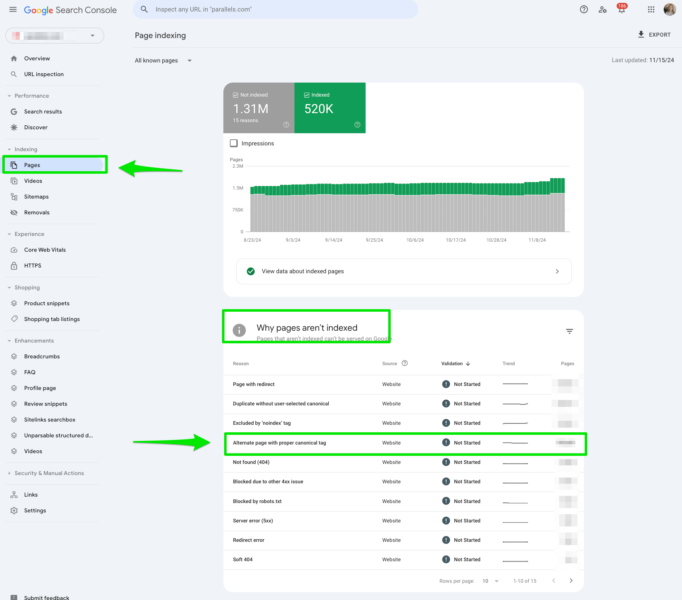
Once you’ve got the export in a spreadsheet, you want to look for a few things.
2. Identify parameter URLs
Start by adding a data filter to your spreadsheet to extract all URLs with ? in the URL. Typically, parameter URLs include a ? to start the parameter query.
If all your URLs listed in the export stem from parameter URLs, you can stop here.
Think of this moment as a gift.
Parameter URLs will always signal this “Alternate page with proper canonical tag” error in Google Search Console.
To triple-check, choose 8-10 URLs to inspect in Google Search Console manually.
You want to see that your parameter URL shows the non-parameter URL as the user-declared canonical tag.
Example:
- A: Parameter URL =
/desktop/buy/?full - B: Non-parameter URL =
/desktop/buy/
You want option B (/desktop/buy/) listed in the user-declared canonical tag.
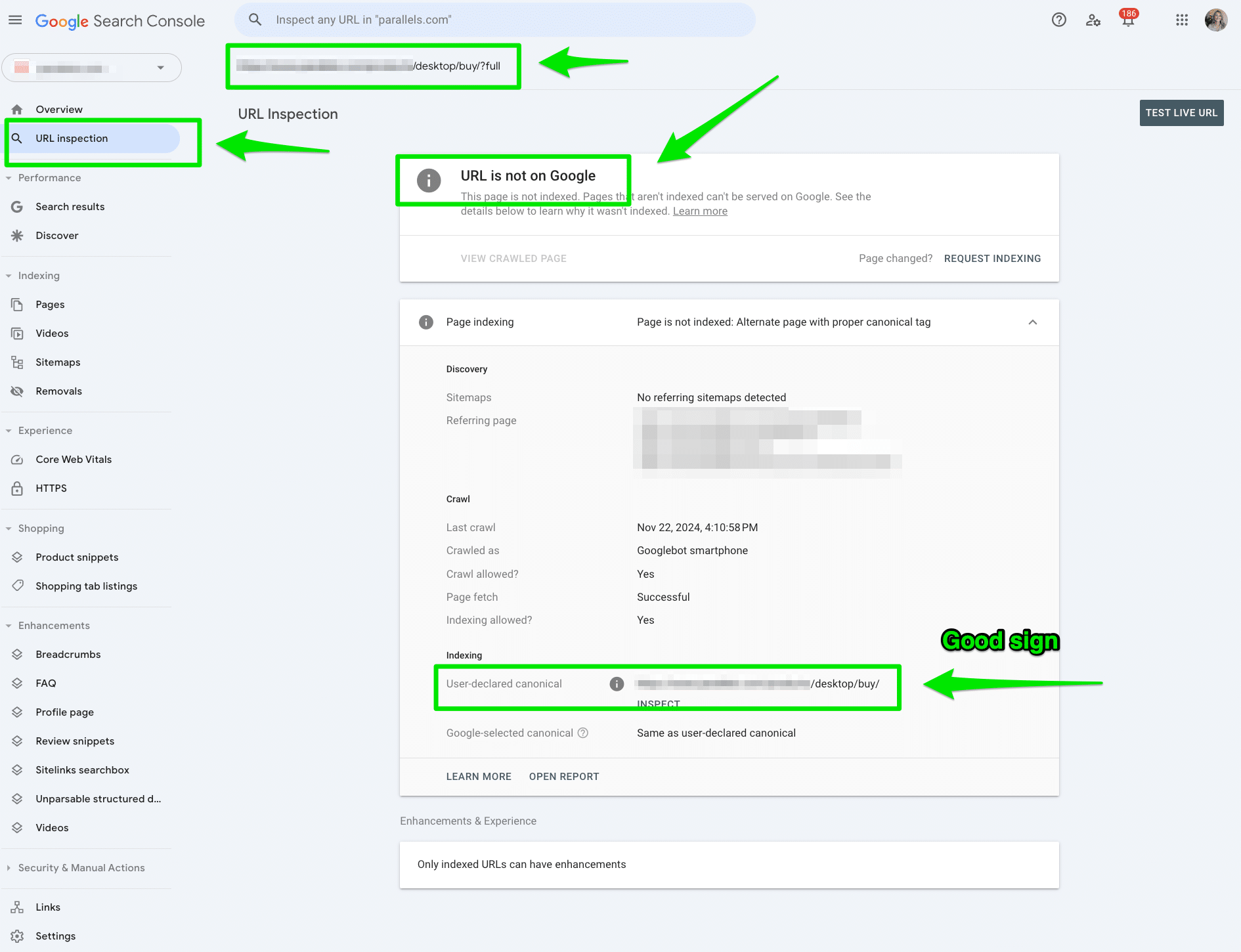
The SEO industry is starting to see search engines like Google handle parameters better.
Google’s John Mueller and Gary Illyes were talking on the Search Off the Record podcast, where Illyes mentioned:
- “We basically have to crawl first to know that something is different, and we have to have a large sample of URLs to make the decision that, ‘Oh, this these parameters are useless.’”
There was also talk about bringing the URL parameter tool (or a variation of it) back into play. The URL parameter tool was decommissioned in April 2022.
Dig deeper: Canonicalization and SEO: A guide for 2025
3. Check your language subfolders
Another common reason this “Alternate page with proper canonical tag” error pops up in Google Search Console is incorrect processing of language subfolders.
Example:
https://website.com/111674/https://website.com/en/111674/
If both URLs are in the same language (English), then it is duplicate content. The same content exists on two separate URLs.
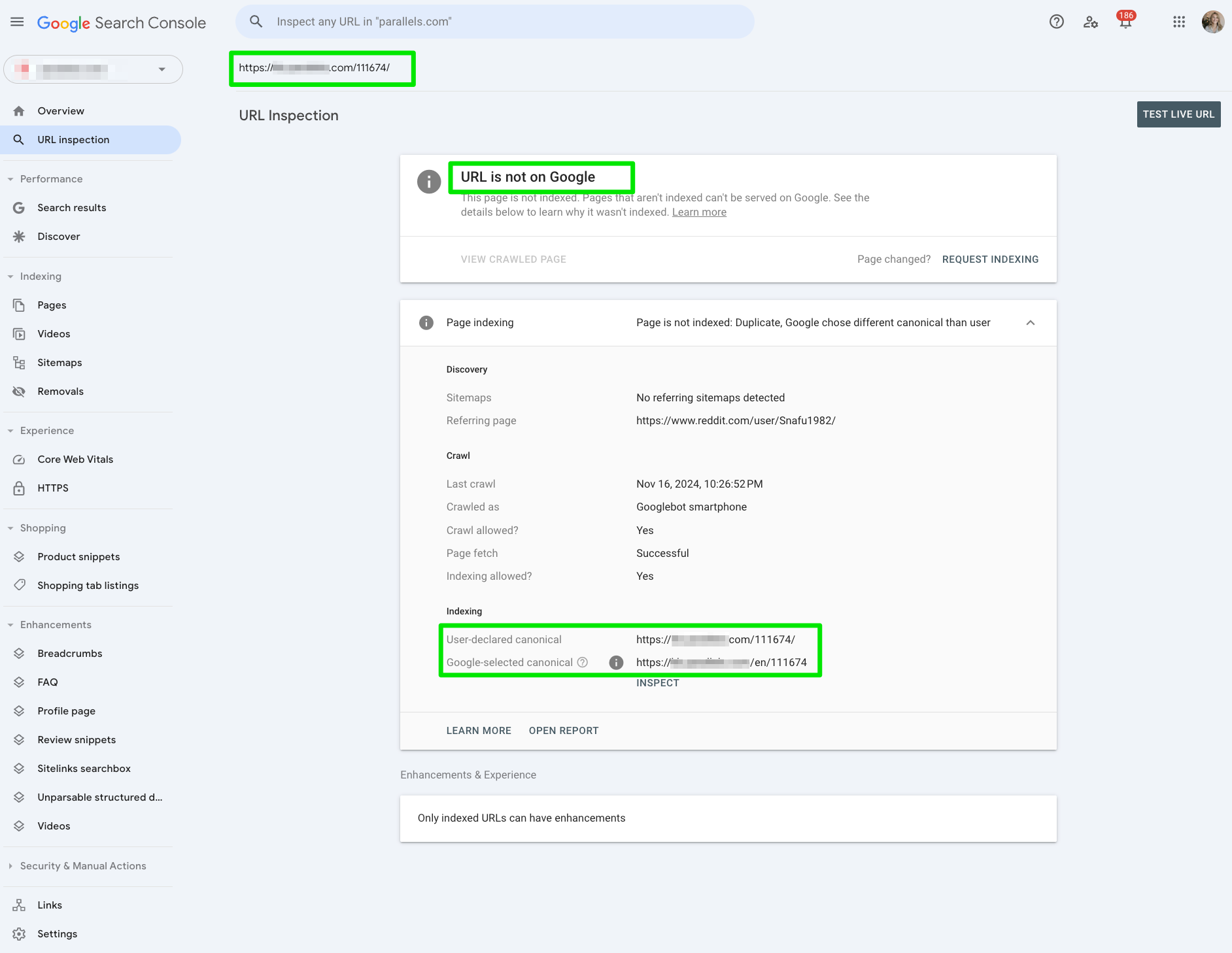
In the above example, Google has chosen the /en/ subfolder as the canonical tag instead of the canonical tag provided by the website.
Why does Google choose your canonical tag?
Because one page is better than the other. Meaning it’s more authoritative.
If this happens to you, update the canonical tag to the preferred Google version and redirect the user-declared canonical tag to the Google-selected canonical tag.
Also, Illyes mentioned localized versions of your website get their own signals. You have to manage as if you have two separate websites.
4. Add trailing slash to URLs
Another culprit that creeps its ugly head into the “Alternate page with proper canonical tag” error report is URLs without a trailing slash.
Example:
- A:
https://website.com/solutions/huey - B:
https://website.com/solutions/huey/
You want URL B with the trailing slash showing in the user-declared canonical tag and the Google-selected canonical tag.
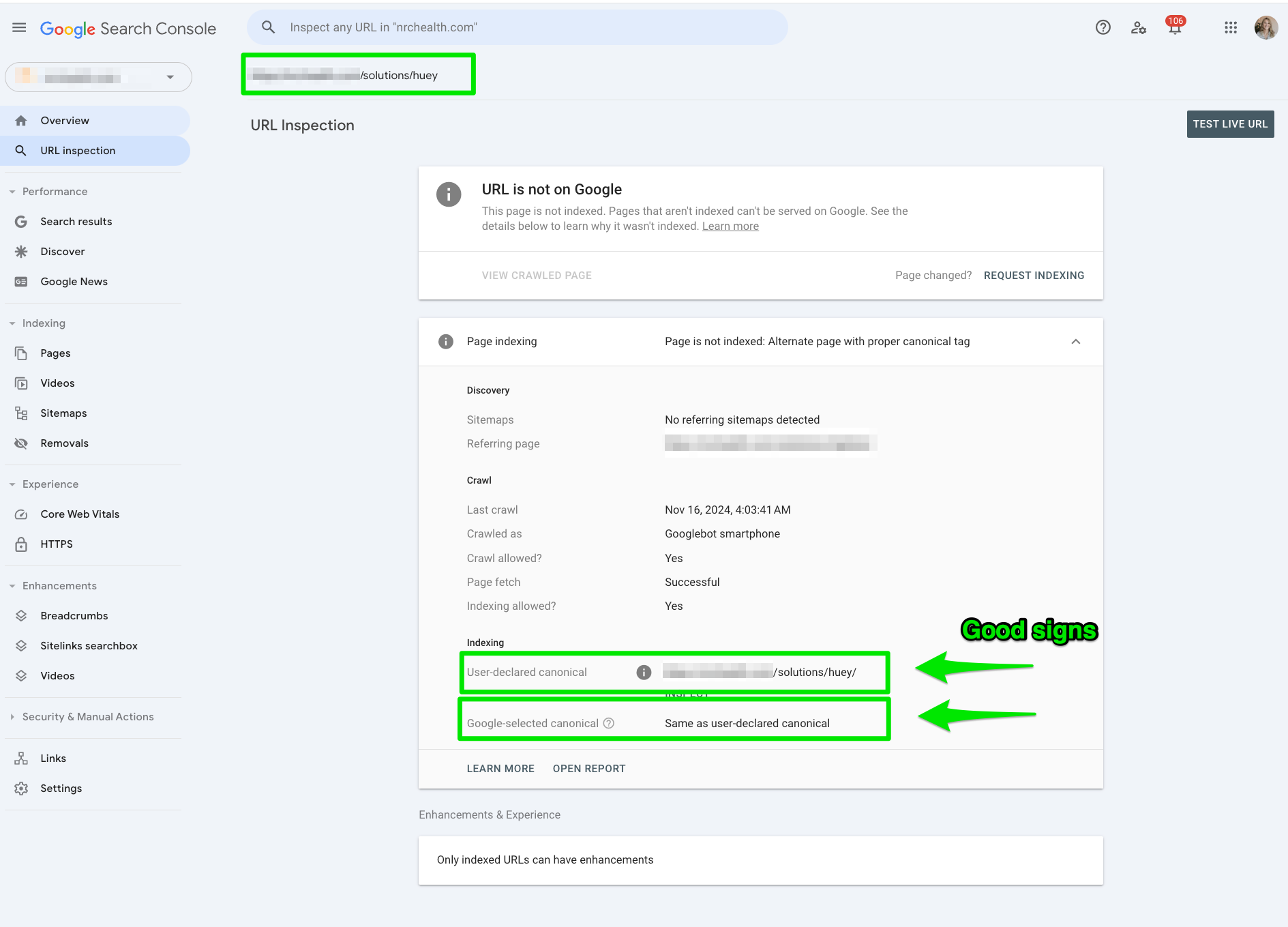
The good news if you have URLs with a trailing slash declared in your canonical tags, you simply need to set up 301 redirects to solve this error.
5. Look for uppercase URLs
You want to ensure search engines treat your uppercase and lowercase URLs equally.
If they aren’t, both URLs can be seen as duplicates.
Example:
- A:
https://website.com/events/ - B:
https://website.com/Events/
In this example, the URL with the uppercase is not indexed because of the user-canonical tag. That’s good!
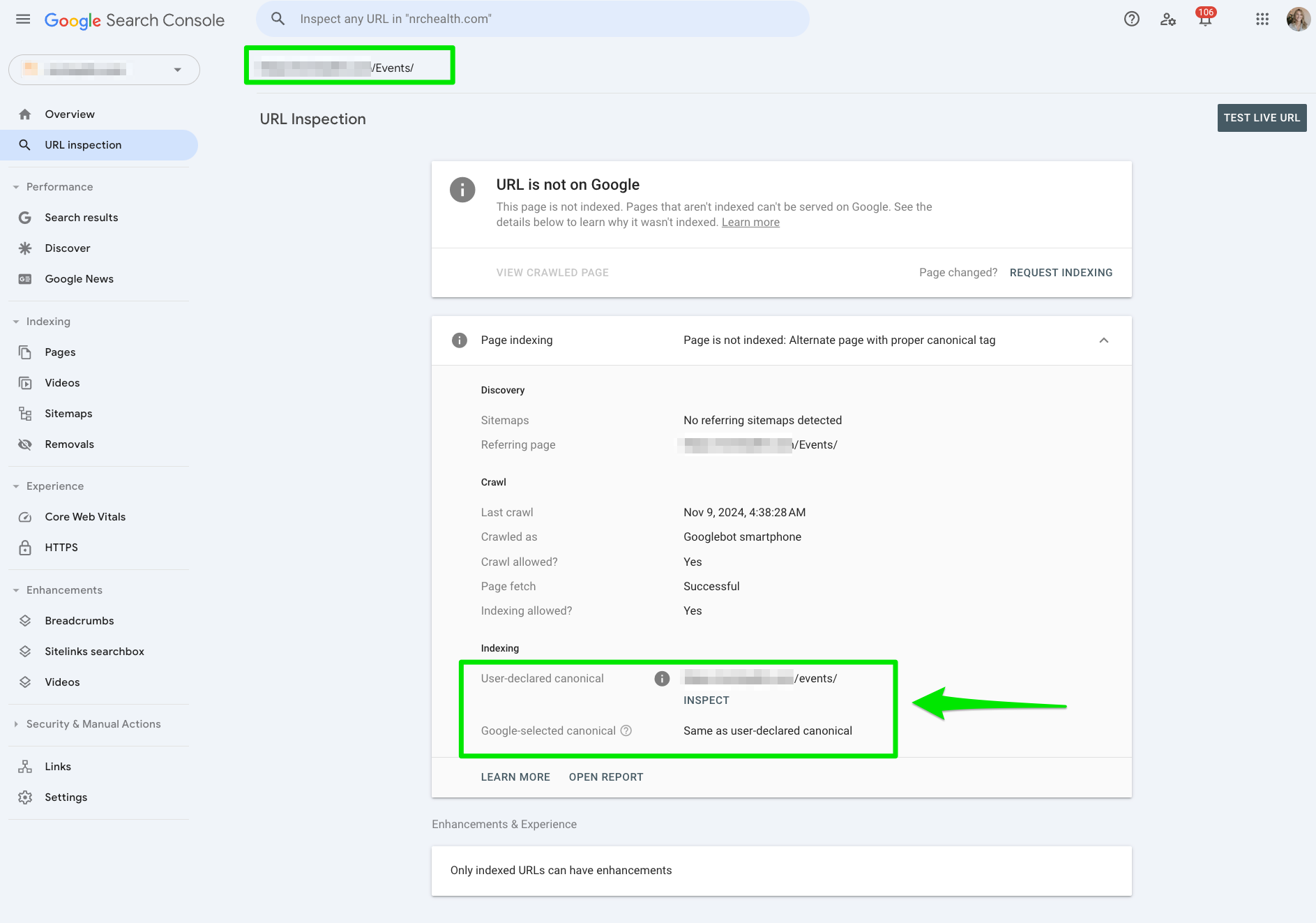
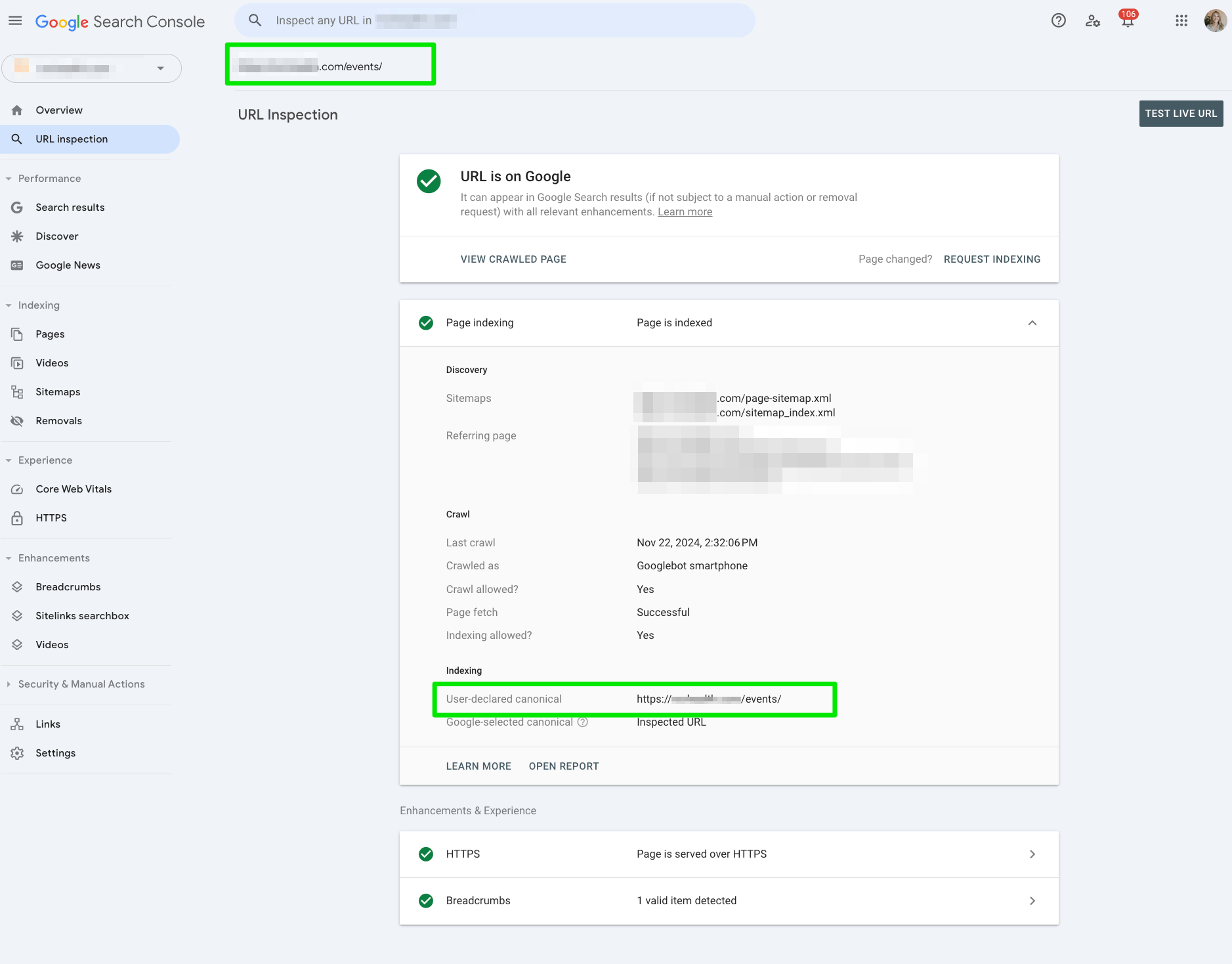
Mueller stated:
- “By definition, URLs are case sensitive, and also things like slashes at the end do matter. So, technically, yes — these things matter. They make URLs different.”
If you run into an issue where you see both the uppercase and lowercase indexed, set up a 301 redirect from the uppercase URL to the lowercase URL.
Then, change the settings on your server to ensure search engines treat them the same.
Optimize your duplicate content to avoid the ‘Alternate page with proper canonical tag’ error in GSC
There is no quick fix or way to scheme the system to avoid the “Alternate page with proper canonical tag” error in Google Search Console.
And let’s be real: SEO professionals are getting better at picking a part of Google’s top-secret algorithm (I know how you like top-secret algorithms) for identifying duplicate content.
Fixing your “Alternate page with proper canonical tag” error is like rescuing Liam Neeson from a wild pack of lions.
You don’t want to rush into the woods with only your wits. You need some serious tools.
Hopefully this article armed you with those tools for your not-so-serious situations in your life.
source https://searchengineland.com/how-to-fix-the-alternate-page-with-proper-canonical-tag-error-in-google-search-console-448852

0 Comments